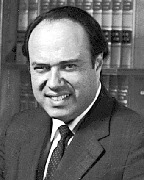Part 1 appeared in the December 3rd, 2010 edition of the New England Real Estate Journal in the Owners, Developers and Managers section.
However, a recent case put this limitation on flexibility in doubt. In Scully v. Tillery, 456 Mass. 758 (2010), the court found that a settlement agreement whereby the developer waived the percentage allocations required by Chapter 183A is enforceable.
I would argue that the adoption of the Uniform Condominium Act in Massachusetts would be better for condominium law and practice. Chapter 183A will continue to require amendments and judicial clarifications. Adopting the Uniform Condominium Act would be better than continual amendments of Chapter 183A and litigation when specific problems arise.
The Uniform Condominium Act is very comprehensive. It balances developer interests and the protection of consumers. It covers leasehold condominiums, phased condominiums, limited common elements, exercise of development rights, rights of secured lenders, protection of buyers, operating the association, management, master associations, etc.
A Specific Example
A specific example is helpful. I am now in the process of drafting documents to relocate a room in a condominium unit to make it part of the adjacent unit. While there is no process for this in Chapter 183A, there are specific provisions for this sort of situation in the Uniform Condominium Act.
More generally, over the years I have been asked by developers and associations to provide unusual features in the condominium documents. In every case, it would have been helpful to be able to rely on a specific section of our condominium statute. This would have been possible under a second generation statute such as the Uniform Condominium Act, but not under our primitive first generation statute.
Conclusion
When Chapter 183A was enacted in 1963, it was geared toward simple apartment buildings. Over the years, the condominium form of ownership has expanded to townhouses, free standing homes, office buildings, warehouses, mixed use buildings, vacation homes, and retail buildings. A statute that may have worked in 1970 or 1980 does not work in 2010.
Saul Feldman is a real estate attorney with Feldman & Feldman, P.C., Boston, Mass.
Tags:
 (1).png)








